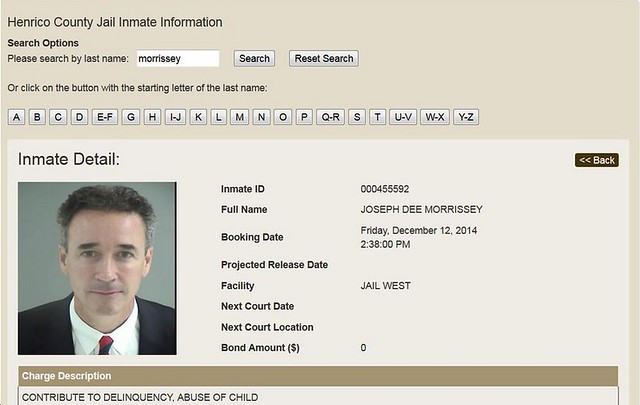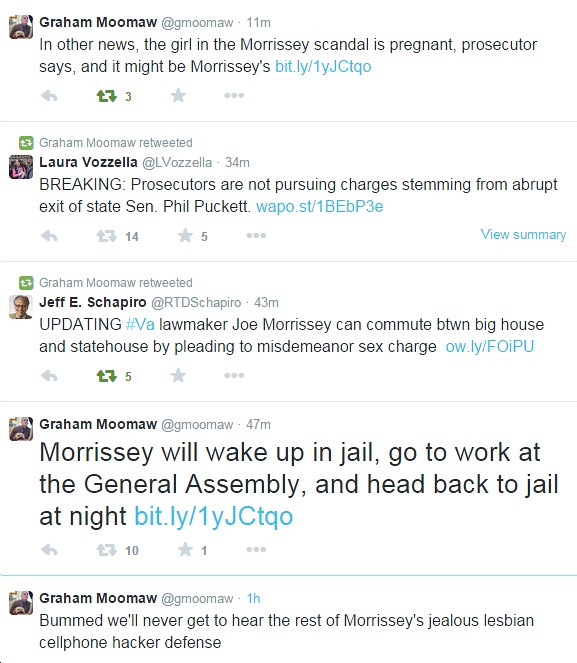Virginia in 2020: A Look Ahead
( – promoted by lowkell)
A little over a year ago, I started a series of diaries looking at the past, present, and future of Virginia politics. You can check out the entries here: Day One, Competitive Districts. Day Two, Turnout Problems. Day Three, Past Mistakes. Day Four, Downstate Democrats. Day Five, Unchallenged Incumbents. Day Six, Present Opportunities. Day Seven, Democratic Trends. Day Eight, Swing Voters. Day Nine, 2021 Redistricting. Day Ten, Independent Redistricting. Day Eleven, A Diverse Future. And finally Day Twelve, Messaging This year, I wondered if there was enough new information to justify a complete update to the series. But Mark Warner’s near defeat in 2014, and the analysis about the race that followed, showed the trendlines of a year ago are stronger than ever. Instead, I spent this weekend looking at various population trends and projections in Virginia, with an eye to the next round of redistricting.
In the fall of 2012, UVA’s Weldon Cooper Center for Public Service issued its population projections for 2020 and beyond. They forecast a slowdown in population growth overall for the Commonwealth, with Southside and Southwest Virginia barely growing at all.

But their projections came with a grain of salt.
Projections about the future are always fraught with uncertainty; many relevant factors could change in ways no one foresees. These population projections rely on the assumption that future population is a function of the past demographic trends. They aren’t forecasts or predictions based on alternative scenarios, but represent a likely outcome should current trends continue uninterrupted.
And then in January of 2014, new population estimates were released showing Virginia’s growth slowing and changing in location.
Since 2010, the Loudoun, Fairfax, Prince William, and Arlington counties, and the City of Alexandria have grown more in population than the rest of Virginia. As Virginia’s population growth rate fell after the recession began, the share of Northern Virginia metro area’s growth actually increased.

Comparing the population projections with the population estimates, the slowdown in growth along the 95 corridor in Stafford and Spostylvania stands out significantly. As does a general decline in growth across the exurban communities of Central Virginia, and the rural retirement destination and “whitopia” of Bedford County. There is also a clear divergence between earlier projections of population stagnation and decline for the inner communities of Alexandria and Arlington and the actual population these areas have experienced.
We are still not even halfway through this decade: a lot can still change. But the trend of increasing urbanization, with younger workers in particularly drawn to places like Alexandria and Arlington, is likely to continue. Even cheap gas will not turn around challenges of college debt and the changing job market for Millennials.
What would redistricting in 2020 look like if these trends continue? The impact is the greatest in the House of Delegates, where even small population changes can have a big impact. Overall, redistricting would see a likely shift of at least two seats to Northern Virginia from Southwest and Southside. Here is my best attempt at being brief in my analysis.
Southwest Virginia
Many counties here continue to see population declines, not just stagnant growth. Unless we recapture West Virginia or consider an invasion of other neighboring states, the House of Delegate districts in this area will continue to shift towards the northwest, starting a domino effect. Southwest would be set to loose close to two-thirds of a district, I assumed the 6th District would be cannibalized by neighboring districts but I could also see the 4th as the likely scapegoat. In addition to another district stretching from the Roanoke suburbs deeper into Southwest, this would cover most of the population changes.
With the collapse in Democratic support in coal country, the partisan nature of redistricting will play a small role regardless of who’s drawing the lines. I challenge someone to come up with a Democratic gerrymander of coal country that could produce gains. The Republican redistricting weakened Democratic strength in the 12th by taking a handful of Democratic precincts around Blacksburg and shifting them into more Republican areas of Pulaski and Floyd in the 7th. With that goal still in mind, I think population pressures will instead force them to draw an elongated 8th district that combines more Democratic precincts around Blacksburg with safe suburban Republican precincts in Roanoke and Salem. Democrats, of course, would rather see a district that keeps as much as Blacksburg and Radford together.
Scoreboard: -1 Republican District (Assuming GOP gerrymandering)
Southside
In current population estimates the entire Southside region stands out for widespread population loss. With the minority-majority 75th constricting expansion in the east, this region is the second target for a district elimination. It will either be the 60th or 61st, the final district will include most of both Halifax and Mecklenburg. Some of the other counties like Prince Edward or Amelia may find themselves in Richmond suburbs districts, like a more elongated 65th. In 2010, the Republican goal was to separate Democratic Prince Edward county from Democratic Nelson county in what had been a competitive 59th district. There’s probably a more Democratic district somewhere here, waiting to be set free.
Republicans have balanced several other interests in this area. Democratic Martinsville has been combined with Republican Pittsylvania to avoid any strong challenge in this area. Democratic Danville also needs Republican precincts from Pittsylvania to stay out of danger. A Democratic redistricting could draw a Martinsville-Danville-South Boston district that carefully picks up minority heavy areas in between. With 2010 numbers I was able to put together a 47% African-American VAP district, I wouldn’t be surprised if that could be done as a minority-majority district in 2020. Even under an independent redistricting we might see more competitive districts in this area.
Scoreboard: -2 Republican District (Assuming GOP gerrymandering)
Eastern Virginia
Jumping now to another rural portion of Virginia, the combination of the Eastern Shore and the rural tidewater communities like the Northern Neck. The Eastern Shore continues to need additional population from the mainland, by 2020 less than half of all voters could be Eastern Shore residents in this district. This puts pressure on the rest of Southern Hampton Roads, discussed below. Not much else is needed in this area, a few more precincts taken from adjacent districts to shore up the 99th and 98th. The districts today are drawn along each peninsula, the Northern Neck for the 99th and the Middle Peninsula for the 98th. If instead they were drawn so that there was an eastern district of the more coastal counties from Gloucester to Northumberland, and then a western districts from Westmoreland to Caroline, the western district could potentially be competitive depending on the specific boundaries.
Scoreboard: -2 Republican District (Assuming GOP gerrymandering)
Hampton Roads
Hampton Roads will also be falling behind in its share of political representation, but not as far as Southwest or Southside Virginia. Northern Hampton Roads along the Peninsula is further away from its current representation, which likely means that the 96th would have to extend even further up into New Kent or other counties taken from the 97th. There will also be population pressure as the two-minority majority districts in Newport News and Hampton need to expand, growth in the urban areas is not looking good. For Republicans, this could be a chance to shore up vulnerable seats. For Democrats, it could be a nightmare of trying to balance the demands of minority legislators with a desire to expand the map.
In Southern Hampton Roads, the population shifts will increase the power of Chesapeake, with the older communities of Virginia Beach, Norfolk, and Portsmouth seeing diminished clout. Between the population changes and having to give more voters to the 100th, this pushes at least one district (the 76th) further into Isle of Wight (and the 64th district). This has a bit of a domino effect in that the 64th then has to pick up more of the white areas adjacent to it, most likely from the 62nd, because it can’t raid minority areas from the 75th.
In 2010 there was the possibility of an additional minority-majority district in Southern Hampton Roads. Although most of the minority-majority districts will have to expand out from Portsmouth and Norfolk, there may still be enough minority voters in Suffolk that this could still be a possibility.
Scoreboard: -2 Republican District (Assuming GOP gerrymandering)
If Democrats do win in any Virginia Beach area district, Republicans will try to change the lines to win it back. I don’t see that happening before redistricting, so I’m discounting that possibility. I’ve debated if they will try to go after Mason in the 93rd, but I haven’t been able to work out a scenario that I think would work for them. I’ve played with a few options, including putting Williamsburg back in the 64th. But it still is hard to draw around the pockets of Democrats remaining in Newport News even after you draw a minority-majority district, and while there’s the idea of balancing Williamsburg with Republican voters south of the James, some of the best Republican areas of the 64th are probably going to shift into the 76th.
Richmond
Having started from two of the peripheries, we start to see the impact of other regions pushing into neighboring areas for additional population. The district eliminated in Southside could draw out a district like the 65th to pick up remaining rural Republican voters. Hampton Roads has had to raid the fringes of the Richmond area both near New Kent and near Hopewell/Prince George. And the decline in population growth means that in order to keep two Hanover based districts possible, one of them will have to take even more of Spotsylvania (55th).
Richmond is holding up much better than the urban communities in Hampton Roads. Political decisions, not population pressures, will dictate more of how the lines are drawn in and around the city and its closest suburbs.
Scoreboard: -2 Republican District (Assuming GOP gerrymandering)
Democrats won’t be picking up a seat here anytime soon. If they do, Republicans will take it back with redistricting.
The Valley and Central Virginia
I’m combining these two areas because the current Republican gerrymandering throws them together in an effort to dilute the voting strength of Albemarle. By splitting both Albemarle and Nelson, Republicans have eliminated two potentially competitive districts. The game will be the same in the next redistricting round. Albemarle and Charlottesville continue to grow, but there’s no major population shift that makes the current GOP strategy unsustainable.
Republicans also redrew Central Virginia to cut up Lynchburg into multiple districts. But the city has swung sharply to the right since then, even in a single district I don’t think there would be the same threat of a Democratic win as there used to be. Republicans may decide to unwind their own gerrymander, or keep it just to be safe.
Scoreboard: -2 Republican District (Assuming GOP gerrymandering)
Rest of Virginia Summary
Even with a Republican gerrymandering, there are limited options to avoid eliminating both a Republican held district in Southwest and in Southside. And with so many downstate Democrats in districts protected by the Voting Rights Act there are few opportunities to proactively go after Democrats. They may be able to shore up the 94th, but going after the 93rd could spread them too thin. Any Democrat that wins in Virginia Beach over the next few cycles will likely be targeted.
A Democratic plan would be able to draw Democratic districts around Blacksburg, Danville, and probably two or three more between Albemarle, Nelson, and Prince Edward. Even an independent redistricting would likely result in some of these seats (but not the Danville one). There could still be the possibility of another minority-majority district in Southern Hampton Roads, and simply changing lines in Virginia Beach and the Richmond suburbs to pick up more seats. But this is all hypothetical, while the shift of two Republican seats to Northern Virginia is most likely.
Northern Virginia
Saving the most exciting part for last! Northern Virginia will gain at least two seats in 2020. It could be more, but the plan I’ve envisioned sees more of Spotsylvania going into a Richmond area Hanover district to shore up population patterns there. That district would really be a hybrid of Northern Virginia and Richmond, so it’s more like Northern Virginia gaining two and a half seats overall.
Based on the 2020 projections, you’d first expect the gains in Northern Virginia to mean a new seat entirely in the Stafford or Spotsylvania area. Those projections had them growing strongly and picking up close to one district. However, the population estimates have shown a very different picture, one in which the two Republican counties barely expand in representation. With continued growth in Prince William, districts like the 2nd will probably shift further north, becoming more Democratic in the process.
There’s an opposite story in Alexandria and Arlington, where the original projections had them declining by almost a third of a seat, while the population estimates could see them growing fast enough to pick up about three-quarters of a seat. Think about what that means if the 45th, 46th, 47th, 48th, and 49th are redrawn to contract, giving up Democratic precincts for inclusion in neighboring Fairfax districts, which are then able to contract and give up their precincts for further out districts. The domino could end up flipping several vulnerable Republicans.
A Republican gerrymander could try to fight this by drawing elongated districts that pull in more Republican voters further out. They could also try to draw districts that include large blocks of minority voters that they assume won’t turn out in odd years, an effective tactic they’ve used in Prince William in the past. While they’ve had some success with this, a few more election cycles this decade could flip three to six more seats. In that scenario triage and saving their existing incumbents would be the priority. Republican may consider new district that could be draw closer into the beltway to act as a Democratic sink in order to protect their remaining incumbents.
The second district will have to be centered in Loudoun, where growth continues to outpace most of the state. Republicans will have a better shot of making this one Republican, but it may come at the cost of giving up on plans to go after future Democratic delegates in the area. Possible Democratic wins in the 34th, 87th, and 32rd in the next few election cycles could convince Republicans to turn that district into another sink for Democratic votes. But they have been effective in some of their gerrymandering, like dealing with Leesburg in the newly created 10th district.
Northern Virginia Scoreboard: +1 Republican District in Loudoun, +1 Democratic District within Beltway (Assuming Republican gerrymander)
Final Scoreboard -1 Republican District, +1 Democratic District.
State Senate, Congressional Thoughts: This approach focused on the existing Republican House of Delegates lines and how the next census could impact them. Incorporating the projections and looking at the State Senate would require an assumption about if Republicans are in charge or not. We’ve seen what they would do if they were in charge right now.
Republicans would go after the remaining non-VRA downstate Democratic State Senators, and could probably come close to knocking off Edwards, Deeds, Miller, and Lewis in that scenario. Changing demographics may make it harder to defeat Barker, Wexton, and Colgan’s replacement, but I think they’d try in at least one of those situations.
In the Congressional arena, we’ll have to see if the courts throw out the existing lines and what replaces them. There’s also the chance that Virginia will gain another seat in 2020.
Happy holidays, and here’s looking forward to 2015.

 Yep, just another quiet day in ever-so-ethical Virginia (snark). By the way, let me be one of the first Virgnia Democrats to call on Del. Morrissey to resign immediately for
Yep, just another quiet day in ever-so-ethical Virginia (snark). By the way, let me be one of the first Virgnia Democrats to call on Del. Morrissey to resign immediately for 





